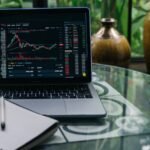The pharmaceutical industry stands out for its strong dependence on intellectual property (IP). In particular, patents on active ingredients represent a special category within IP regulations with specific provisions on shelf life. These allow innovative companies in the sector to have the exclusivity over the marketing of their drugs for a limited time. After the expected 20 years, the patent expires and generic drugs come into play, starting the production of molecules identical to those of the original drug.
The latter, in general, entail a significant reduction in the sales price and, consequently, a significant decrease in revenues for the original producer, which can reach 70-90%. Easily replicable, generic drugs require effective planning of the production process and the chemical supply chain
.
2023 biosimilar stocks: the top
The complexity of biological medicine makes it difficult to define a good equivalent of the original treatment, since such therapies are made of much larger compounds and, sometimes, of entire living cells. However, the biosimilar represents an alternative to the generic for biological medicine. Because of the complexity of their development, biosimilars require a lot of time and monetary effort, often requiring up to 5-9 years and 100 million dollars for research and development, along with regulatory fees. This is an important difference from generic drugs, which usually require only 2 million dollars and 2 years to develop. The global biopharmaceutical market was valued at 389 billion dollars in 2022, representing 30.5% of the entire pharmaceutical market. In particular, the biosimilars market is valued at 16.8 billion dollars in 2022 and is expected to grow to 77 billion dollars by 2028. More detailed information on the process of developing biosimilars can be found in the in-depth analysis of Samsung Bioepis.
Biosimilar companies
Companies operating in the biosimilar sector are distinctly different from generic companies because of their high production costs. In fact, while generic companies rely mainly on competitive prices and an effective marketing strategy, companies that produce biosimilars must unequivocally demonstrate the equality of their product with the brand-name drug in terms of therapeutic effect, toxicity, half-life and other critical aspects. Despite the possibility of competing on costs, the price gap compared to established treatments is less evident, since the production of biological drugs
is very expensive.
In addition, biosimilars are often used to treat potentially fatal diseases, such as genetic diseases or cancer, which makes doctors very hesitant to change their treatment habits with a lesser-known product. The approach of biosimilar companies is therefore much more oriented to research and development and requires a very high degree of technical expertise in order to guarantee a high quality product at an
affordable price.
Many large innovative pharmaceutical companies have been very active in the field of biosimilars, placing them between pure and generic pharmaceutical developers. Despite the de-risking deriving from the imitation of an existing and already approved drug, the research and development activity required to bring a biosimilar to the market is still very demanding and requires the full implementation of clinical studies. However, since these treatments are often aimed at relatively small market niches, with fewer than thousands of patients per year, it is common to see the expiry of a patent that is followed by only one or two biosimilar companies, while maintaining relatively high profit margins
.
The first biosimilar companies
Below are the first biosimilar companies, with a particular focus on those that have mainly this activity in their core business. Some companies have a vast portfolio of biosimilars, but that is being dispelled into other sectors, such as the search for new drugs or chemical drugs. (The sorting of the list is based on market capitalization at the time of writing this article
.)
Samsung Biologics Co., Ltd, founded in 2011 and linked to the large Korean giant Samsung, is the world’s largest Contract Manufacturing Organization (CMO) for biopharmaceuticals, with a production capacity of 364,000 liters. Since its founding, the company has marketed six biosimilars similar to Remicade, Herceptin, Enbrel, Humira, Avastin and Lucentis, currently sold worldwide, including the United States, Europe, Canada, Australia and Brazil. Samsung Biologics is developing biosimilars for Soliris for blood diseases, awaiting approval, as well as for other drugs in phase 3 of clinical trials. Thanks to its effectiveness and skills, Samsung Biologics has an advantage in developing huge quantities of biosimilars at competitive prices, attracting investors looking for a solid growth model. The launch of new products and the optimization of the use of plants are expected to increase the company’s revenues and profits in the coming years.
Celltrion, Inc, another large Korean biosimilars company, has marketed 6 different biosimilars and 9 generic drugs, has a total production capacity of 190,000 liters, with a total of 450,000 liters expected in the future and is also working on the development of a digital health solution. The company’s plan for the future is ambitious, but investors will need to keep an eye on the Remsima market and the potential new competitors for this drug.
Kyowa Kirin Co., Ltd, a Japanese manufacturer of biosimilars, is dependent on the sales of its only commercial product, Adalimumab, for inflammation/immunology applications, sold since 2018. Investors should keep an eye on the end of phase 3 and the commercial results of the future launch expected in 2025-2026, together with the company’s ability to expand into other biosimilars.
Viatris Inc, the result of the merger between Mylan and Upjohn, a former division of Pfizer, in 2020, is active in a wide range of therapeutic areas, with 26 different brands and a rich pipeline of potential new products. The company has the potential to maintain its current earnings and make them grow a bit in the period 2021-2028, thanks to net sales opportunities between 2027 and 2028. Investors will need to keep an eye on how the available free cash flow is used to reduce debt.


